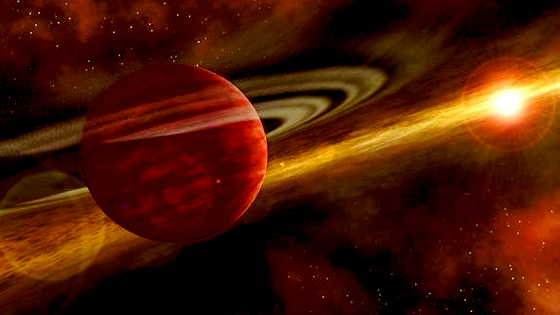Astronomers discover “planet that shouldn’t exist.” But it f**king does!
Oh, astronomers! You know so little! Or rather you present facts to us, we use phrases like “planet that shouldn’t exist” and then we’re up in your ass when you present findings about a “planet that shouldn’t exist.” So I guess it is us fat-brained proles who rather suck. Or just me. I suck.
Astronomers have discovered a planet 11 times the size of Jupiter revolving around its host star in the farthest-ever orbit observed so far among all the planetary systems known.
Amazingly, the planet dubbed, HD 106906 b, is about 650 AU away from its host star, HD 106906 A. AU stands for Astronomical Units or the average distance between earth and sun. This is a massive distance, by solar standards.
In our planetary system, Neptune and Uranus are the farthest large planets. The newly discovered planet is about 20 times more distant from its host star than Neptune is from the sun.
What is more baffling about this planet is that it is not cold unlike all the other planets that are distant from their parent stars. The surface temperature of HD 106906 b is about 1,500C, much hotter than even the Earth’s core, and loosely comparable to the solar temperature of about 5,500C. HD 106906 b is glowing from the residual heat of its formation, researchers told Fox News.
The planet is also quite young as it was formed just 13 million years ago, compared to Earth’s 4.5 billion years old.
The planetary system appears to be relatively new as leftover material from the planet and star can still be detected.
The one-of-a-kind planet was spotted by a team led by Vanessa Bailey, a fifth-year graduate student from the University of Arizona.
The discovery has puzzled astronomers while raising new questions about how such large planets are formed so far away from the host star.
“This system is especially fascinating because no model of either planet or star formation fully explains what we see,” Bailey said.
According to commonly accepted theories, planets that orbit close to their host star, such as earth are formed by compression of leftover clumps of massive primordial disks of gas and dust that have collapsed and compressed into a star.
But the process is too slow to explain how giant planets far away from their star are formed, the student said.
[IBT]




